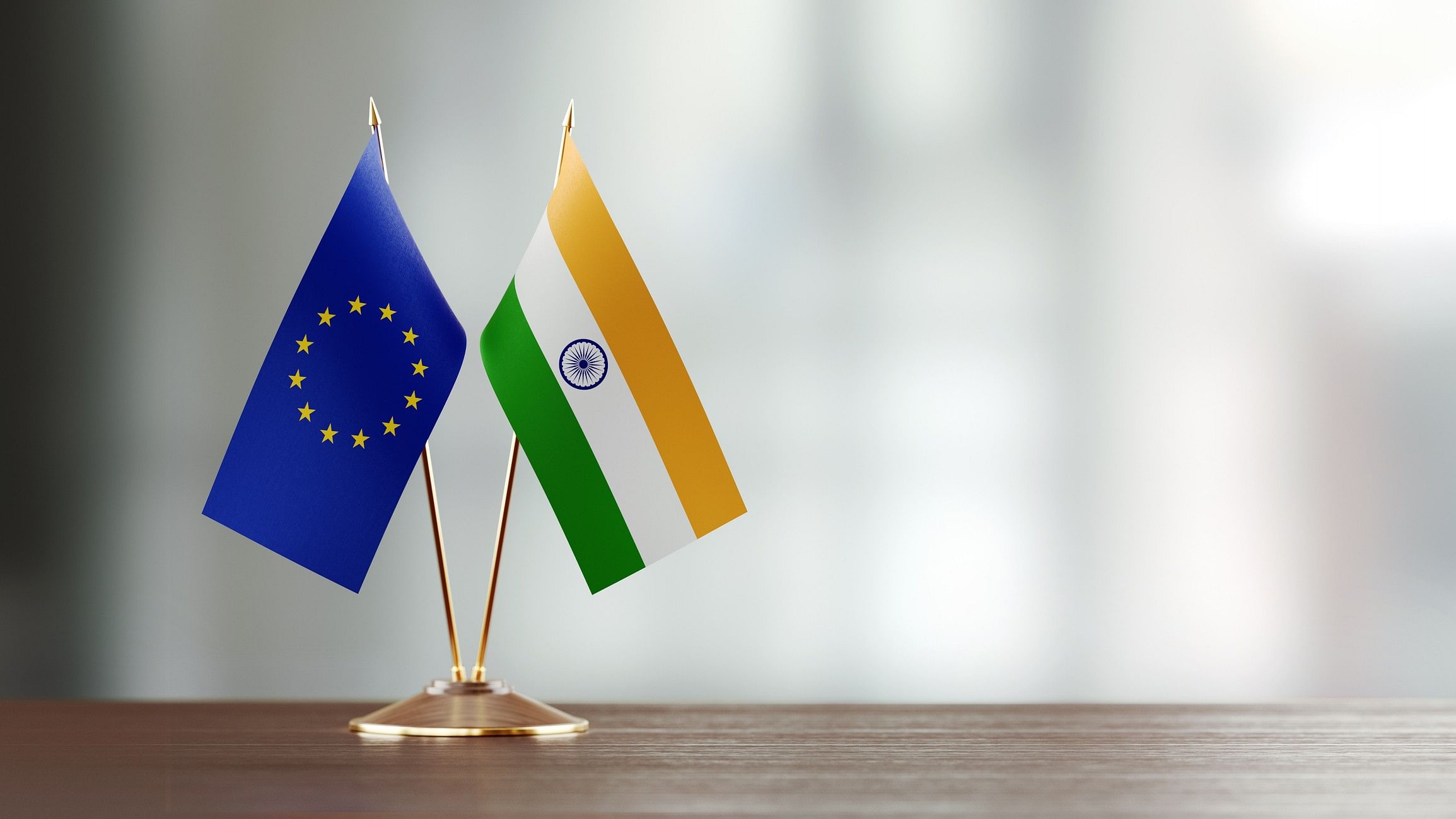
European Union And Indian Flag
Credit: iStock Photo
Since 2022, there has been a drive to conclude a host of free trade agreements (FTAs) with India’s major trading partners. Concerns have been evinced over the delay in the India-United Kingdom FTA as it is viewed as a major step forward in enhancing trade ties with developed markets. In this context, an even more significant agreement has gone under the radar. That is the one with the European Union (EU), India’s third-largest trading partner. It is probably one of the most critical FTAs being negotiated as it could give an enormous boost to exports of both trade and services.
Currently, bilateral trade flows between India and the EU are far lower than their potential at an estimated $135 billion in 2022-23, though it rose from $116 billion in FY2022. The obstacles to raising them are largely non-trade barriers as well as protective tariffs on both sides. An agreement that provides lower tariffs could help in improving the competitiveness of India’s exports, especially in areas like textiles and apparel.
The EU, it must not be forgotten, is much larger in economic terms than many countries with which FTAs have been concluded, like the United Arab Emirates, and Australia. It is currently the world’s third-largest economy with a gross domestic product (GDP) of $16.6 trillion. It follows the United States and China which have a GDP of $26 trillion and $19 trillion respectively.
In other words, a trade agreement with the EU implies a collaboration with one of the global economic powerhouses and it can be to India’s benefit in the long run. Naturally, this will only be so if the agreement is negotiated in a way that provides concessions to Indian goods and services enabling market access to the highly-developed countries in the EU. Yet seeking such access means that India will have to provide reciprocity to the EU, which is equally keen to tap into India’s huge domestic market.
Despite the eagerness on both sides, there are a host of roadblocks in the way of concluding a bilateral trade and investment agreement which is why talks that began as long ago as 2007 were suspended in 2013. It was only last year that negotiations were resumed on this critical issue. It was realised that there is a mutual benefit in the world’s third-biggest economy having closer ties with the world’s fastest-growing economy.
The impetus to revive the dormant negotiations also stemmed from geopolitical tensions that have engulfed the world since 2022. The Russia-Ukraine conflict, in particular, has had an adverse impact on Europe with inflation soaring mainly due to the higher cost of energy. Similarly, India has been facing growing border frictions with China, and is now increasingly alert to the need to develop deeper trade relationships with other global players.
In terms of market access, the focus of the EU is largely on automobiles, dairy products, and wines and spirits. For India, however, there is difficulty in cutting tariffs in all three areas. The domestic automobile industry is well developed but there is a thrust towards indigenous manufacture, rather than the import of fully made-up vehicles. The dairy industry, on the other hand, needs protection due to the small farmers involved in the sector. As for alcohol, it may be possible for tariff reductions, but maybe not to the extent sought by the EU given a burgeoning domestic industry.
On its part, India is seeking an easier visa regime for its professionals to work in EU countries. This may be difficult to provide throughout the EU given the differing regulations in individual countries. Lower tariffs are also being sought in areas like textiles and apparel while agricultural products face a variety of non-tariff barriers that need resolution. Fresh obstacles have now arisen in the form of the new Carbon Border Adjustment Mechanism levies which could affect steel exports where there is potential owing to the Ukraine war.
Digital regulation and personal data protection are also areas where there is greater stringency in the EU. In contrast, the regulatory framework is at a preliminary stage in this country, hence there may be a divergence in views.
Differences, therefore, exist on a wide array of issues. What is more important is for the two sides to continue negotiations by seeking to compromise rather than take a rigid stance. The recent comments of the visiting EU Agriculture Commissioner portend a more flexible approach as he commended the high productivity of small farmers here and the need to share technology. India too needs to find ways to address European concerns as the outcome will be huge benefits to both these large economies.
(Sushma Ramachandran is a senior journalist.)
Disclaimer: The views expressed above are the author's own. They do not necessarily reflect the views of DH.